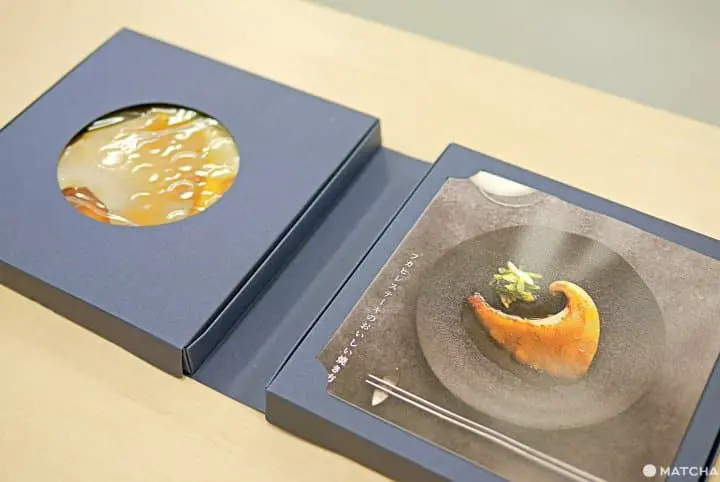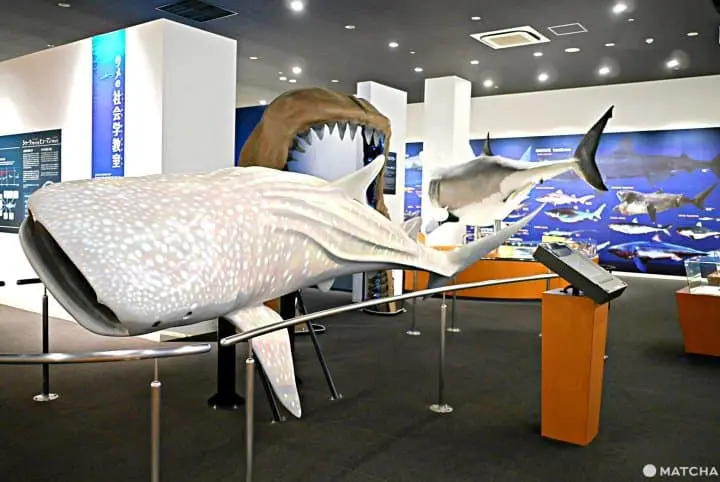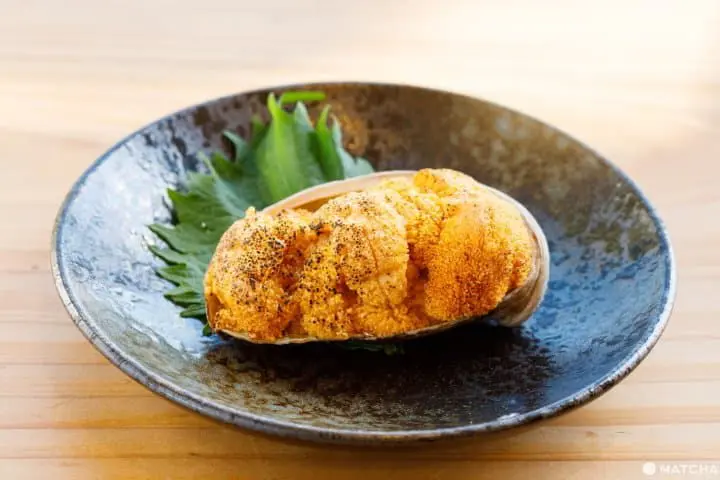A Rare Delicacy! Savor Shark Fin in Kesennuma, a Seaside Town in Miyagi

Kesennuma, located on the coast of Miyagi Prefecture, is a major fishing town. In particular, shark fin is known as a local specialty of Kesennuma. We visited Ishiwata Shoten, a shark fin store with a 50-year tradition, to learn what makes shark fin such a rare and treasured delicacy.
Shark Fin - A Treasured Asian Delicacy

Picture courtesy of Ishiwata Shoten
A well-known delicacy in Chinese cuisine, dried shark fin is often served in the form of a soup or stew. While there are many concerns around the sustainability of shark fin, Japan has a long history of utilizing shark in cuisine and has developed refined methods for processing sharks humanely and without waste.
Kesennuma in Miyagi Prefecture boasts the largest domestic catch of sharks, bringing in about 90 percent of Japan's total catch.
Visiting Kesennuma for Local Shark Fin Dishes

Picture courtesy of Ishiwata Shoten
Kesennuma is located on the Sanriku Coast, one of the top three fishing grounds in the world. Its location makes Kesennuma a prime fishing town in the Tohoku region. The fleet of massive fishing boats docked in the harbor is an incredible sight to see!
The jagged topography of Kesennuma Bay is known as a "ria." By keeping the waves inside the bay calm, the ria helps cultivate plankton, a great source of nutrition for fish.

Enjoy a beautiful view of the Kesennuma Bay from the city's landmark Ukimido Gazebo! You can hop on a tour boat from the harbor to cruise around the bay.
You'll also find local gifts and food at the nearby shopping center Naiwan.
A Rich Shark Culture

Before we introduce a tasty shark fin dish, let's take a look at the shark culture in Kesennuma. We talked to Hisashi Ishiwata, the representative director of Ishiwata Shoten, a shark fin store with over 50 years of history.
"Shark fishing and processing have been long-time traditions throughout Japan. The reason Kesennuma remains the largest producer of shark fin today is that we have a large presence of professionals who specialize in shark processing."
It's rare to find so many professionals gathered in a single city. Finning, the act of cutting off shark's fins and discarding the rest, has been a growing problem in some areas of the world. Fortunately, Kesennuma has a long-standing tradition of using the entire shark without waste.
"Sharks have no single part worth wasting. Their meat can be turned into kamaboko and chikuwa (*), while the bones and skin are excellent ingredients for health products."

Even a shark's heart, known as the star of moka (salmon shark), can be enjoyed as sashimi. You can only find these delicacies in a fishing town like Kesennuma!
*Kamaboko and chikuwa are two types of Japanese fish products made with fish paste.
Ishiwata Shoten - Recovering from Disaster

The view of Kesennuma in November 2020
On March 11, 2011, the Tohoku Earthquake and the subsequent tsunami devastated the city of Kesennuma.
"The harbor, market, and factories were all completely destroyed. Two out of the ten shark fin stores in Kesennuma had gone out of business."
Having lost almost everything, Ishiwata Shoten worked quickly to rebuild their factory. They were determined to protect the history of Kesennuma as the city with a rich shark-related cuisine and culture.

"If Kesennuma loses its processing factories, fishers will take their boats elsewhere. We had no idea about the future, but we knew we needed to rebuild our factories as soon as we could."
As devastating as the earthquake was, it had also brought a positive change.
"Before the disaster, shark fin stores were competing against each other. But in the aftermath, we all had to start from square one. This brought us together to revive the market in our city."
Mr. Ishiwata shared his story with strong passion for Kesennuma and its future.
Shark Fin at Ishiwata Shoten
Shark fin is a delicacy that you don't get to try often. What makes it such a valuable food?

"First off, only ten percent of the shark can be made into shark fin. If you divide the number of sharks caught in Kesennuma among the Japanese population, one person could eat shark fin once every 35 to 40 years. For this reason, shark fin is a precious commodity."
Kesennuma is primarily home to blue sharks. Compared to other sharks in the world, blue sharks are relatively small, thin, and gelatinous. By keeping them fresh and processing them carefully, you can prepare absolutely delicious shark fin.
"Shark fin is difficult to process because it takes meticulous manual work. We use a process called 'sumuki,' developed by my grandfather."

Inside a factory. Picture courtesy of Ishiwata Shoten
Sumuki involves removing excess skin, meat, and bones from raw shark fin, then using a purpose-built machine to dry it.
In the past, most shark fins were dried in the sun. The sumuki method makes it possible to fully process shark fins while they are still fresh. This ensures that the shark fins are high quality and safe to eat.
Shark Fin Steak! Experience Different Flavors
Now that we've learned how shark fins are prepared, let's find out how they taste.
"Since shark fins are very gelatinous, they will taste of gelatin. What makes shark fins interesting is how the flavors change once the gelatin mixes with cooking oil."

With that, Mr. Ishiwata brought out a shark fin steak. While shark fins are primarily served as a soup or stew in Chinese cuisine, the steaks at Ishiwata Shoten are a great way to better enjoy the flavor and texture of shark fins.
The shark fin steak has no artificial seasoning and very little salt. You can pan-fry it yourself at home.
"We added consomme soup to this shark fin, but the soup tastes quite different when it's combined with the shark fin."

The center of the shark fin is said to be the most delicious. It has a chewy texture and adds a layer of richness to the consomme soup. We were taken aback by how tasty it was!
"The textures and flavors of shark fin change depending on how it's cooked and seasoned. It is a unique food, almost like a science experiment."

The more Mr. Ishiwata shared his story with us, the more we were drawn to the deep culture of shark fins. Visit Kesennuma to savor this delicacy yourself!
Shark fin steaks (two per package): 10,800 yen after tax
Ocean Flavors in a Bottle

In addition to shark fins, Ishiwata Shoten sells many other tasty products! Made with special in-house recipes, the company's oyster sauce and XO sauce are popular for their rich seafood flavors. Both sauces include only natural seasoning and use local ingredients.

Karakuwa Peninsula. Picture courtesy of Ishiwata Shoten
The oysters used for the oyster sauce are sourced from Karakuwa, a renowned Kesennuma oyster farm. These oysters are especially healthy, due to the abundance of plankton in the area. They are harvested between March and May when the oysters are largest.
"Normally, oysters are boiled down into dashi (*). But we extract the flavor straight from whole oysters. We developed our oyster sauce so you can enjoy the best flavors of Kesennuma oysters, wherever you are and at any time of year."
Use this oyster sauce at home to bring a delicious seafood flavor to any dish!
Kesennuma Milky Oyster Sauce: 972 yen after tax (Three-year aged: 2,160 yen after tax)
Kesennuma Collagen XO Sauce: 2,160 yen after tax
*Dashi: Japanese soup stock
Umi-no-Ichi Market - Food and Fun

If you visit Kesennuma, you'll want to experience its whole range of seafood. Just next to the fish market is the Umi-no-Ichi. On the first floor, you'll find many shops selling fresh seafood products at reasonable prices.

You can also enjoy sushi and sashimi rice bowls at the various restaurants on the precincts. The shopping area has a large selection of local staples, including products from Ishiwata Shoten.

On the second floor is the Shark Museum, the only one of its kind in Japan. Overseen by leading marine scientist Kazuhiro Nakaya, the museum is a fun place to learn more about sharks and the shark culture in Kesennuma.
Shark Museum Entrance Fees (after tax)
Adults: 500 yen
Elementary school children: 200 yen
Enjoy the Flavors of Kesennuma Anywhere!
Once thought of exclusively as Chinese cuisine, shark fin has been garnering increasing attention from Japanese chefs.
Asahizushi (Japanese) is a local sushi restaurant with over 50 years of history. Here you can enjoy sushi made from Ishiwata Shoten shark fin!
You can also find the products from Ishiwata Shoten on their website (Japanese). You can order them to enjoy at home or to send them as gifts.
A beautiful seaside town with a passionate community, Kesennuma is a great destination for your next trip!
Written by ISHIGAKI KUMIKO
In cooperation with Ishiwata Shoten, Umino-ichi Shark museum
Sponsored by Reconstruction fishery processing industry market recovery promotion center
MATCHA's promotional account for corporate and local government advertising. We aim to provide useful information to our readers in an enjoyable manner.




































![[2026] Family Winter Trip to Suzuka Circuit! – For Both Day trips and Overnight Stays!](https://resources.matcha-jp.com/resize/720x2000/2025/12/26-254097.webp)
![[Northern Okinawa] 4 Recommended Cosmos Fields in Okinawa | Sunflowers and Cherry Blossoms in the Same Season!](https://resources.matcha-jp.com/resize/720x2000/2024/08/12-192028.webp)


